Fukien tree berries turned black and leaves are withered
We got a new Fukien bonsai tree and my husband decided to set it outdoors in unfiltered Florida sun. We had just gotten it. I saw it several hours later and moved it back indoors. The leaves are dry and have fallen and the bright red berries have turned black.
What now? We bought this at a small nursery. I've had a jade bonsai for ten years that I just divided and made a second jade bonsai with the cuttings. I know jade bonsai plants are very easy to grow but what do I do with this Fukien tea now? Any ideas would be helpful!
We're plant people with over 150 orchids and many rose beds so it's not as though we have a black thumb! Thank you.
Comments (23)
jackpug
Original Author2 years agoThank you Al. I'll post a photo of it tomorrow. See what you think from the photo.
Related Discussions
Rescue me! Maple leaves withering and turning black
Q
Comments (5)It's a bacterium that's pretty difficult to control. Rather prevelent here in the PNW as our weather is an ideal environment for the pathogen and it can decimate a good number of nursery crops. Recent studies by OSU have shown that there are numerous variations of the pathogen and that many strains have developed resistance to the typical controls, usually copper or streptomycin. Copper, like the Bordeaux mix, is likely your best chemical control or a similar product like Microcop. Application should be begin in fall and again early in the season before budbreak. It is likely too late to apply now that the tree is in leaf - J. maples are rather sensitive to sprays on their foliage and copper in particular can cause a phytotoxic reaction. I would remove the blackened foliage and trim back any leafless portions to a healthy node. Watch for stem discoloration and as you see it, prune out below it. (And yes, good pruners come in all sizes :-)) Disinfect the pruners with something like rubbing alcohol or bleach - Lysol spray is popular at my nursery. Plant it in a good location as soon as you can and keep an eye on it. A young tree in decent growing conditions could outgrow it, but nothing is guaranteed....See MoreBlack Berry vines
Q
Comments (23)There are 3 blackberries that grow wild in western WA, western OR, SW BC and NorCal: Himalayan blackberry, Rubus armeniacus, is a horrible weed. Grows huge, with fishhooks for thorns, and the berries while large and easy to pick are rather tasteless. Birds seed them everywhere. The individual canes can be very thick and woody and grow several feet a year. Almost like a climbing rose cane. Can cover bushes and small sheds, very difficult to control. Trailing or evergreen or cutleaf blackberry, Rubus laciniatus, also a horrible weed, but not so widespread or so large as Himalayan. Wicked thorns, tasteless berries. Neither one is native. The native blackberry, Rubus ursinus, aka dewberry, little wild blackberry, sometimes also called trailing blackberry. Absolutely positively delicious fruits, but small and hard to pick. Tiny thorns too, that embed themselves deeply and hard to get out because they're so fine and they break off at the surface of your skin. Thin, pliable, nonwoody, trailing canes. Berries in early summer, where the other two (nonnatives) have berries in late summer. While thickets of the native blackberry can build up over time, I rarely see them growing more than knee deep, and relatively easy to keep under control. The canes do wind their way through shrubs but I've never seen them bury anything the way Himalayan and cutleaf do. The native berry mostly creeps along the ground. I believe that people do use goats to control blackberry. An excellent job for your Aussie. I used to live somewhere where the city hired a guy with a flock of goats and a couple of border collies to control brush in their parks. the goats ate the brush, and the dogs kept them in place....See MoreGoji Berry Plant Leaves Falling Off
Q
Comments (16)I purchased Goji from Seven Arrows in Attleboro/North Seekonk. They had information from the seeder that "it was best grown as a trailing vine". I planted mine in the ground, and have been lashing up the vines to a nearby fence. It's profusely flowering and shows no yellowing or leaf-fall. It's in full sun, amended clay soil. I'm unsure of the exact chemistry, but the soil is not the best for gardening. What a pleasant surprise the plant is!...See MoreAm I on the right track with this Fukien Tea tree?
Q
Comments (2)Thanks, moochinka! I will definitely move it right in front of the window and trade it with a larger tray from my huge dwarf jade (which really doesn't need nearly as much humidity anyway). I will update if it takes a turn for the worse or starts looking amazing. The berries are still coming along nicely and haven't blasted or dropped....See Moretapla (mid-Michigan, USDA z5b-6a)
2 years agoNot meant to be snotty: Each time you mist, it raises RH for about 10 minutes. That there are 1,440 minutes in each day sort of adds some perspective to how effective misting CAN be. IOW, it's pretty ineffective, and, if you mist too often, you provide an opportunity for incubation of fungal spores, which are ubiquitous.
If you have a large tray you can fill with gravel and water (the water should not be deeper than the gravel layer) it would be helpful. You can buy an inexpensive thermometer/ hygrometer (measures relative humidity) to see how well different strategies work. See here.
Al
jackpug
Original Author2 years agoInteresting points. I think I'll go with a tray underneath the plant.
I have a jade bonsai that I bought at an outdoor market 10 years ago. I set in in a window and it didn't grow a lot and finally it got gangly so I set it outdoors. I bought another pot and pruned it and they both seem to be doing fine. I haven't watered it much since I pruned it a week ago. Should I be or should I put a tray of water under it as well? The jade plants are back inside after spraying with neem oil.
Thank you. Clearly I'm not knowledgeable about bonsai but am an avid orchid and rose grower.
Also, at some point down the road is Nutricote a good fertilizer for the jade bonsai and the fukien tea if it lives?
I appreciate any help you can provide.tapla (mid-Michigan, USDA z5b-6a)
2 years agoI have a jade bonsai that I bought at an outdoor market 10 years ago. 'Jade' as in Crassula or as in Portulacaria? I set in in a window and it didn't grow a lot and finally it got gangly so I set it outdoors. I bought another pot and pruned it and they both seem to be doing fine. I haven't watered it much since I pruned it a week ago. Have you done a full repot of the jade ............ bare-rooting and root-pruning? Should I be or should I put a tray of water under it as well? They are well-prepared for arid conditions, so no need. The jade plants are back inside after spraying with neem oil. Why back inside?
Also, at some point down the road is Nutricote a good fertilizer for the jade bonsai and the fukien tea if it lives? The answer needs to include some qualifications. 18-6-8 would be the best Nutricote product should you choose it. If you know you'll be forgetful about fertilizing regularly unless you use a CRF (controlled release fertilizer) then go ahead and use it. I tend to shy away from CRFs for bonsai because you relinquish a great deal of control over what plants receive (in terms of nutrients) and when they receive it. This is an important consideration during summer's dog days when you want to pull back on fertilizer applications to allow the plant to more easily take up water. Since release of nutrients is primarily temperature controlled, delivery rate would be peaking just when I would want to be limiting fertility. I use Foliage-Pro 9-3-6 for all I grow. For the very few plants which require special consideration, usually an extra measure of K/ potassium, I keep on hand some ProTeKt 0-0-3, which has the added advantage of containing opalene silicon which increases cell wall strength, increasing resistance to heat, cold, dry/wet conditions, insect herbivory, and disease pathogens. If you do choose to use Nutricote 18-6-8, note it containers no calcium, and it could use a little more potassium, which could be resolved through use of the ProTeKt 0-0-3 I mentioned above.
Al
jackpug
Original Author2 years agoHi Al,
It's a Jade Crassula. I watched several youtube videos before I pruned and repotted some of the stalks into another pot. I took all the dirt off and trimmed the roots as well. I put it back in the house because all 150 plus orchids and our roses are outdoors and I like having a few plants indoors. The jade had lived so long I decided it was happy in the window and put it back.
To be honest its roots were not great looking. I expected them to look like the roots in the youtube video I'd watched. I put a new screen in the bottom and fresh everything. I bought bonsai potting soil from a local shop and gravel for the top and put larger gravel on the bottom. I used some thin wire to hold the stalk the way I wanted it and will cut it off when it's stable.
I saw pictures of a 'jade forest' and liked it far better than the pain jade bonsai. I put most of the stalks in an outdoor succulent garden but all the stalks that were leaning in one direction and the same width I put on one side of the other pot. I hope both pots of jade grow.
I'll try using bonsai fertilizer. We use Nutricote on our orchids and wondered if it would work on bonsais.
I never would have put the fukien tea in pure sun in Florida but what's done is done. I'll hope for the best. The leaves withered and are falling off and I'm just going to let it be for now with the exception of adding a dish underneath with water in it.
Thank you for your help. I'm learning. It surprises me that the jade crassula stayed as small as it did for so long! I'll be sure and keep it pruned going forward as I have an idea now of what I'd like it to look like. Prior to this I never thought about it. I know the marriage of the imagination and nature is part of the art of bonsai but before I just saw it as a small plant. Like I say...I'm learning.tapla (mid-Michigan, USDA z5b-6a)
2 years agoTo be honest its roots were not great looking. I expected them to look like the roots in the youtube video I'd watched. I put a new screen in the bottom and fresh everything. I bought bonsai potting soil from a local shop and gravel for the top and put larger gravel on the bottom. If the roots weren't severely compacted, it's a good bet over-watering is the underlying cause of the poor condition of the roots and slow growth rate. The plant's chemical messengers keep plant central apprised of whether or not there are enough healthy roots to support new top growth. Just as the seed radicle (taproot) is first to grow from seed, root growth precedes top growth. The plant probably went through endless cycles of the roots being too wet for a while, which killed many fine roots; then, the current food/energy the plant makes during photosynthesis was devoted to root growth. By the time the roots were approaching being 'recovered' the cycle started again. Sometimes it's the growers fault for being heavy-handed on the watering can, but perhaps more often the fault lies with an overly water-retentive medium that simply cannot be watered to beyond the point of saturation (so the soil is being flushed of accumulating salts when you water) w/o the plant having to pay a penalty for the excess water the medium holds. There are many ways to actively or passively limit the amount of excess water a medium can hold, and you can read about it/ ask questions here.
Be careful about buying commercially prepared bonsai media. It is often made with ingredients capable of being combined to make a very good medium, but more often than not the maker of the medium wants to cut material loss by avoiding the screening of the particles to an appropriate size. IOW, they usually leave all the dust and fines that should be screened out of the medium in the mixture. That clogs all the large pores between soil particles, wrecking drainage and aeration, the first two reasons that come to mind as reasons to buy bonsai soil in the first place. About bonsai on YouTube: There are some very good videos provided by well known artists, but at least an equal number of videos that if taken at face value are more apt to be limiting that advantageous. I saw pictures of a 'jade forest' and liked it far better than the pain jade bonsai. I put most of the stalks in an outdoor succulent garden but all the stalks that were leaning in one direction and the same width I put on one side of the other pot. I hope both pots of jade grow. I would encourage you to 'branch out', so to speak, into plants other than jades for anything but very large bonsai. It's difficult to produce a realistic representation of anything you would see in nature unless it is quite large. I suggest Amur maple as a good starter tree unless you live where winters are very mild. It grows very fast and whatever indignities a grower might force on it won't even cause them to break stride. It is also hardy to z4, so it won't need winter protection in most areas of the continental US. You can buy an ounce of seed for a pittance, and have a batch of trees popping up next spring. Put a few in the ground to thicken, remember to lift, rotate them (so branches aren't mostly all on the side toward the most sun), and root prune every 1-2 years. You could also try your hand at mini-jade (portulacaria), which has the same branch and leaf habit as Crassula.


How to pinch/prune jade, Portulacaria, maple, and other trees with leaves and branches arranged alternately in pairs.
I'll try using bonsai fertilizer. We use Nutricote on our orchids and wondered if it would work on bonsais. I use Foliage-Pro 9-3-6 for all my trees. The same company (Dyna-Gro) makes a bonsai formula (I think it's 7-9-5), but it doesn't work as well as the 9-3-6. If you're interested, I'll share an email from Dyna-Gro's CEO about buying a "special" fertilizer for this plant, that plant, and every other plant. He basically says they're on the market is because advertising hype has convinced the less informed that they're needed. The Nutricote will work well, it's a good fertilizer, but note the 2 drawbacks I mentioned above. One is minor, the second (that you relinquish some control over fertility levels) is the greater consideration in my estimation. I know the marriage of the imagination and nature is part of the art of bonsai but before I just saw it as a small plant. Like I say...I'm learning. Of the thousands that try their hand at bonsai, only a minuscule number of individuals stick with it. It's not easy, and the plants are demanding. Skip one watering and a tree you've been tending for decades is toast. The herd gets thinned about the time people realize buying tree after tree so it can be brought home and killed isn't half the fun they thought it might be. It happened to me. I killed a number of trees before deciding I had no clue about how to keep a tree healthy enough to work on; so, I pet the trees aside and started learning all I could about soil science and plant physiology/ morphology. When I started back at the hobby 4 years later, I found I could keep almost anything healthy, and I've managed to progress some from there. I often describe bonsai as a combination of art and science, with the art part being 4-dimensional, the 4th dimension being life.
Al
jackpug
Original Author2 years agoAl, you've been very helpful and I'm grateful. Am not sure how you're able to cut and paste on Houzz but that too is helpful!
As far as the soil...I bought soil from a bonsai artist who learned bonsai from his grandfather as a child in Vietnam. He teaches martial arts and has beautiful bonsai trees for sale in a nursery behind his studio. He sells bonsai soil he mixes himself so it is not a commercial bag of soil.
I'm not overly fond of jade bonsai, although mine has been hearty for a beginner. I'm getting new shoots on the one I transplanted and I watered it for the first time today after transplanting it ten days ago. I misted it a few times but not aggressively.
I think you are absolutely correct about the roots and overwatering. In my case it was more of a case of watering when I remembered, so more intermittent watering. Sad because I'm religious about watering my roses and I understand them and what they need. I never took the time to learn anything about bonsai. The root ball was severely compacted I would say. I'd only seen the roots on one youtube video and the dirt was loose and the roots were 'free'. When I took my jade apart the soil was hard and dry and the root ball was small and appeared compacted. Honestly, I'm embarrassed to say how sad it looked and I'm glad that I did at least watch some good videos and saw that overwatering is a big issue with bonsai. My husband said, "Make sure you keep them watered." My response was...No, I read that you should not water them after transplanting. And the one is sprouting so I'm glad I didn't. The jade forest doesn't look as healthy but I'll just let it be for now while I try and learn more!
Al, I read some of the science you linked me to about the soil and water and the analogy with the sponge. I didn't get to the bottom of the reading, (It's a lot) but is there any easy way of knowing how often to water an indoor bonsai? I'm sure that's a huge part of the science of growing a plant with 'special needs'. And I mean that to say that many plants will grow no matter what. People see our orchids which are amazing and never stop blooming and think it must be difficult. Orchids are very easy to grow and grow in the wild beautifully, but overwatering or not watering at all is a common reason that people kill orchids. That and not feeding them.
Roses are more difficult and I say they're like 2 year old kids..Always stomping their feet and wanting more attention! I keep notes on mine and water and fertilize them religiously. They're demanding but the reward is stellar.
When people keep bonsai outdoors what do they do when it rains?
You mentioned the maple and I'd love to try that but I'm in Florida. You mentioned mild winters. We have very mild winters and I'd like something I can grow indoors. We have a house that's surrounded with windows and we have lots of light and good space to learn but am not sure what the best choice would be in choosing a small tree to start.
I absolutely agree that learning the science of what the plant needs is critical. I'm willing to put time into that and I'd like to start with only one new plant. Something that I start from scratch. I'm not particularly fond of jade plants ironically. They're fine in a succulent garden but as a bonsai I prefer the ones that look like small trees.
You're right about so called bonsai youtube videos. Many are just hobbyists and not true experts but I did find several which I found very helpful. I found that I could tell in the first minute or two which was which. If you have a favorite artist that you think is a good teacher I'd be very interested. Sometimes I learn best by reading about something and other times I learn best by seeing something. I find that with plants I enjoy seeing the transformations. People that will show a plant a year later or even longer. It's amazing to me.
I'm not sure if I have the art of bonsai in me or not. I do find them fascinating and find that I want to learn so that's a start. Prior to taking my jade plant apart I wasn't as interested in them as I am now. I always enjoyed looking at them but not with the idea of growing them but more as a spectator. Now I'd like to try something I could take seriously.
Thank you again Al! You've given me a lot to think about. Give me a few more weeks and I'll post a before and after of my jade plant. I wouldn't call it a bonsai yet...jackpug
Original Author2 years agoAl, I read the thread on perched water and how excess light can counteract overwatering and how variations on soil mix effects watering.
I'm still not completely clear on perched water but will reread and look for additional reading.
If I'm using the correct soil for bonsai and I believe I am. I don't know if this makes sense but the soil felt much lighter in my hand than commercial potting soil I use for outdoor plants.
I will buy the Foliage Pro 936. How often do you use it? Is it something that varies depending on the condition of the plant or do you use it on a regular basis on all your bonsai?
When do I water from beneath the plant as opposed to putting water directly on top of the plant? For the Fukien Tea that's scorched you suggested using a tray with gravel and water beneath it to water it. How long would you go with this method...Until I start to see new growth? I would love to start a small starter bonsai tree or grow one from seeds but I'm not sure of a 'good' source.
Is there an online site you use for buying your bonsai materials? I don't know if Houzz will allow you to share that kind of thing. I mentioned I'm in Florida and I don't want to invest in anything that won't do well here.
Also, in the link you sent me to about perched water and soil...How much does bright light compensate for too much water or for a normal watering schedule? I usually wait to water indoor plants when they're bone dry. That may not be correct for bonsai so I'll keep reading but I'm a bit confused about when and how much to water right now. I'm clear about the Fukien tea for now and reasonably clear on the Jade Crassula. I'll water it when it's very dry only?
We use rain water to water our orchids. Do you think that's necessary for indoor bonsai?
Thank you Al. I want to learn this. I learned about roses when we bought our first home. It had an exquisite rose garden and the late owner's daughter lived next door and taught me about roses. It was a great gift.
My husband and I taught ourselves about orchids and it's been a fun journey.
I'm not sure my husband has the patience for bonsai but I do so we'll see how it goes.
Have you made any youtube videos or do you have an artists whose videos you like?
Thank you Al! I'm grateful for your willingness to help.Katie
tapla (mid-Michigan, USDA z5b-6a)
2 years agoAl, I read the thread on perched water and how excess light can counteract overwatering and how variations on soil mix effects watering. Increasing the light load can cause increase the volume of water the plant uses, but nothing can counteract the limitations imposed by over-watering. In plants, lost growth potential is lost forever. It can never be recovered or compensated for. The best you could hope for is something that quickly eliminates any excess/ perched water in the container.
I'm still not completely clear on perched water but will reread and look for additional reading. If you have questions, ask them there. Someone or I will answer them. If I think it would be helpful to add to someone's answers or they missed something, I'll see it. Understanding the concept is a very important part of container gardening, likely the biggest step forward a container gardener can take, so I encourage you to work toward an understanding of what drives water retention, because it's critical to bonsai. I was a failure at bonsai until I learned how to apply the concept.
If I'm using the correct soil for bonsai and I believe I am. I don't know if this makes sense but the soil felt much lighter in my hand than commercial potting soil I use for outdoor plants. In most cases, it's quite a bit heavier if 'heavier' means weight. The medium I use is 2/3 mineral particles.
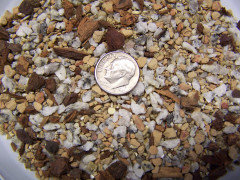
I will buy the Foliage Pro 9-3-6. How often do you use it? Frequency of applications and solution strength varies with temperature change, what you choose as a grow medium, and your watering habits. I generally try to fertilize every weekend when mean air temps are 80* or lower. If it's hotter than that, lower fertility facilitates water uptake, so I withhold fertilizing until it cools down. Is it something that varies depending on the condition of the plant It can in some cases or do you use it on a regular basis on all your bonsai? I use as regularly as temperatures allow. In most cases you should avoid fertilizing when temps are below 55* to avoid something called ammonium toxicity.When do I water from beneath the plant as opposed to putting water directly on top of the plant? There is really never a good reason to water from the bottom unless leaves are pubescent (hairy) and easily damaged by water, as in AVs. For the Fukien Tea that's scorched you suggested using a tray with gravel and water beneath it to water it. Oops, you misunderstood or I wasn't clear enough. I said, "the water should not be deeper than the gravel layer". This is so the pot sits above the gravel in the humidity tray and the water in the tray has no pathway into the pot. It's purpose is to provide additional humidification of the surrounding air only. Please adjust. How long would you go with this method...Until I start to see new growth? I would love to start a small starter bonsai tree or grow one from seeds but I'm not sure of a 'good' source. I buy all my seeds from F.W. Schumaker Seeds. Right now, many will be out of stock, but their stock is usually replenished in Oct-Nov.
Is there an online site you use for buying your bonsai materials? I don't know if Houzz will allow you to share that kind of thing. I mentioned I'm in Florida and I don't want to invest in anything that won't do well here. Skip the idea I suggested about the Amur Maple. FL is too warm.
Also, in the link you sent me to about perched water and soil...How much does bright light compensate for too much water or for a normal watering schedule? I usually wait to water indoor plants when they're bone dry. Even though the jade will tolerate that (bone dry), it won't LIKE it, and it would be lethal for a large number of trees not well known for tolerating that treatment. You'll need to water most bonsai daily, and the medium you use will need to drain well enough so that's not a problem. That may not be correct for bonsai so I'll keep reading but I'm a bit confused about when and how much to water right now. The idea is to use a soil so forgiving, it's difficult to over-water. That is attainable by using soils made of particles from 1/10" through about 3/16". Look to American Bonsai, 3345 N Courtenay Pkwy. Suite 101, Merritt Island, FL 32953, (321) 802-2222. I'm .......... reasonably clear on the Jade Crassula. I'll water it when it's very dry only? I was a silent observer during a workshop being conducted by Japanese bonsai master, Ben Oki. A lady was working on pruning the roots of a juniper when she asked, "How often should I water my plant?" With a stone face he replied, "Wait until plant become completely dry; then, water day before."
Mr. Oki had a dry sense of humor, so I was never able to determine whether he was trying to be funny or if the reply had something to do with the fact that English for Mr. Oki was a second language. What I do know is, he didn't smile or look up from his work to see if anyone understood his clever play on words; that, and the fact his advice was and remains spot on.
We use rain water to water our orchids. Do you think that's necessary for indoor bonsai? Not necessary, but helpful. Can you collect condensate from an air conditioner or dehumidifier? It's as good as rain.
Thank you Al. I want to learn this. I learned about roses when we bought our first home. It had an exquisite rose garden and the late owner's daughter lived next door and taught me about roses. It was a great gift. I can sense a certain drive in you. Bonsai isn't easy. I was so smitten with the art I couldn't be deterred, but it's slow going doing it on your own, which is why I want to encourage you. It will forever challenge and reward you personally for as long as you pursue it.
My husband and I taught ourselves about orchids and it's been a fun journey.
I'm not sure my husband has the patience for bonsai but I do so we'll see how it goes. The patience comes naturally after you've acquired a few trees and the ability to switch from people time to tree time. You'll wonder where the afternoon went after you switch back to people time, too.
Have you made any youtube videos or do you have an artists whose videos you like? Peter Tea has a blog, plus a good number of videos that are appropriate for those just beginning their journey. When you first open a video, skip to the end to see the if the result looks like something with significant promise, or just leaves you scratching your head in wonder.
Join a bonsai club! Go to shows! If you don't actually participate in workshops, be a silent observer. Pay to hear various artists and masters critique the trees in the shows. I learned most of the basics after I got a feel for the horticultural aspects of the art through the list of activities I just listed. I have 3 people I currently have over regularly to learn about the art and do some work on developing trees. It's good to be retired in these times.
Thank you Al! I'm grateful for your willingness to help. You're welcome - my pleasure.
jackpug
Original Author2 years agoAl, your thoughtful comments and answers to my questions have already been helpful and you've helping to drive my determination to learn more about this complex art form.
One of your comments and links dumbfounded me. Literally. I jumped to a link you provided that showed bonsai soil and could not believe my eyes. I saw it on the Melbourne site and again on Peter Tea's site after seeing the photo you posted with the coin in it. Bonsai soil. My husband and I went to two locations in Orlando that advertise themselves as a bonsai store.
Both sites sold bags of soil they mix themselves. I didn't buy the first bag but the second store sold a bag that looked identical. It had a small amount of gravel in it but was mostly loose dirt. Seeing 'soil' with far, far more gravel and rock in it made me realize that I didn't have the correct soil at all. Aside from buying soil I bought a bag of gravel and when I replanted my jade plants I found I used what I thought was too little dirt with too much gravel on top. By too much gravel I mean i can't put my finger in the soil to feel how dry it is because I put such a thick layer of gravel on top. I'm glad now that I added that much gravel but it makes me mad that I was sold 'cheap' and incorrect soil. Actually it wasn't cheap. It was 10.00 for a loose gallon sized zip lock of mostly dirt. It makes me want to repot again and do it correctly. Do you think I should do that? There is plenty of gravel...Maybe an inch and a half to two inches on top of the dirt on the jades that I replanted. Please share your thoughts on that. New correct soil would not be a big investment.
Live and learn. Thank you. Seeing the correct soil was a huge ah-ha moment.
I used scissors and a small pruner to trim my jade. Will I need special scissors down the road or is that something I won't need until I've advanced quite a way?
I was told by the Vietnamese shop owner that the club in town is not friendly to beginners so I felt somewhat uncomfortable reaching out after he said that. I will keep an eye out for shows and lectures and I'll reach out to the local bonsai club myself and see what kind of response I get. I've found clubs to be incredibly helpful in the past. Rosarians band together to order massive amounts of materials in bulk and they open up their gardens for show as well as organize field trips to well known gardens and sales a ways away. I've found them to be a tremendous resource and hope the bonsai group can be helpful too.
I so enjoyed hearing Mr. Oki's answer to 'when should I water my plant?' It's a brilliant answer. If I asked, 'How often should I feed my child?' The answer would be 'Wait until he's starving and then feed him three hours before.' I taught as a contractor for NASA on the space program for many years and would tell my almost exclusively small groups of male students that there were no stupid questions and I love this answer even more having been a teacher myself. I mention they were all men because they were hesitant to ask questions in the beginning and would wait and ask me privately.I understand their hesitancy now that I'm learning something new. I won't ever forget that answer. Brilliant.
Al, there were still some dead dry leaves on the fukien tea and I took time to snip them off and had to snip the ends of some of the branches, I was pleased to find green wood about an inch beyond the dead wood so I'm hopeful!
I'll take the time each day to water them and will spend time daily to read and keep learning. I realize this will be a process and will take time.
I would still like to find a small tree I can grow 'from scratch' indoors but am not yet comfortable choosing a type. When I say 'from scratch' I'd be fine with a very small tree and not seeds. I know i'm not drawn to the firs and would prefer something not deciduous. I found Peter Tea's bonsai for sale beautiful. His wisteria took my breath away.
Al, do you grow your bonsai indoors or outdoors in a greenhouse? I'm wondering if most people grow them outside with grow lights? Being in Florida with beautiful light streaming in our windows it seems like an ideal place to grow them. When I set the jade outdoors it got ants all over it and I sprayed neem oil on it before repotting and bringing it back indoors.
Thank you again Al. You've helped me in some significant ways. Water and soil for starters and good resources. I'm grateful. Is there anywhere online that you post photos of your trees? I'd love to see them.
Katiejackpug
Original Author2 years agoI came across this video looking for bonsai shops, classes, and opportunities to learn in Florida and this video fascinated me. It's not the normal type of bonsai video I've seen!
Hope others enjoy it too. I had no idea how many people source bonsai this way.
https://www.youtube.com/watch?v=G5f1ZSvVjFU
tapla (mid-Michigan, USDA z5b-6a)
2 years agoThanks again for the kind words, Katie. I meant to get back to this thread, but I usually have a number of discussions going on here at the forums and also by email, so it's difficult to remember who I owe a reply to.
"It makes me want to repot again and do it correctly. Do you think I should do that? There is plenty of gravel...Maybe an inch and a half to two inches on top of the dirt on the jades that I replanted. Please share your thoughts on that. New correct soil would not be a big investment." American Bonsai in FL has the largest assortment of finished media and media components with the possible exception of any large orchid supply outfits which have an assortment of organic materials to add to the inorganic materials. Other than considerations re light levels, media choice is the most critical choice you'll likely make. That doesn't mean I give short shrift to factors like temperature, humidity, pH, ....., it's just that the medium as it relates to root function/health is where most issues gain traction before becoming a threat, including disease pathogens, abiotic pathogens, and insect herbivory; this, because a plant's ability to defend itself is tightly linked to its metabolic rate.
Living in FL provides the grower more leeway when it comes to timing of repots. In MI, the best window for repotting most tropical trees is mid-Jun through last week of Jul. If your repots are within the span of time from Memorial day through mid-Sep or possibly to the end of Sep, the plant won't act inconvenienced. Ideally, tropicals should be repotted when they are just about to enter their most robust period of growth. For you, that's Mem day to Independence Day; and the reason is, recovery is much quicker when a plant's energy reserves are high and its ability to make food is at or about to peak (summer solstice). I wouldn't hesitate to repot unless you have real concern the plant won't tolerate the stress. Even then, that decision needs to be weighed against the stress caused by excess water retention. If my plant, it gets repotted into an appropriate medium.
I used scissors and a small pruner to trim my jade. Will I need special scissors down the road or is that something I won't need until I've advanced quite a way?
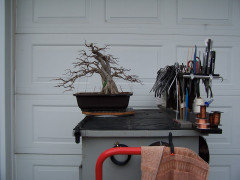
You can get by with tools you might find at home, scissors, wire cutters, pruners, tweezers, but you'll find yourself becoming more critical of your own work as you progress and will soon want some basic tools specifically designed to facilitate and precisely perform the work the trees require. Buy the best you can afford as good tools add to the joy of working on trees. If you need guidance, I can help.
I'll take the time each day to water them and will spend time daily to read and keep learning. I realize this will be a process and will take time. Please be sure to avoid watering before the plant actually needs it. A water-retentive medium is much more difficult to manage in shallow pots. The pots in the image below are full of soil and the shaded area represents a perched water table.

I would still like to find a small tree I can grow 'from scratch' indoors but am not yet comfortable choosing a type. Any ficus with small leaves is a good choice. The tree on my work station above started out as a 3" pot of 5 ficus benjaminas. As they grew and fused (inosculated), I started a few more cuttings and added those to those already fused. Appropriate species of Ficus for bonsai include, benjamina, benjamina "Too Little", orientalis, microcarpa, salicifolia, nerifolia, diversifolia, exotica, nitida, pumila, ingens, philippinensis, rubiginosa, and many more. You would really enjoy Eugenia myrtifolia aka Syzygium australe ('commonly brush cherry') See below
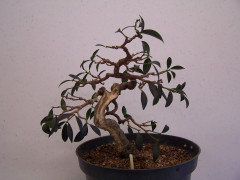
Just after a very hard pruning ^. A dwarf cultivar of schefflera, like "Luseane" would do well in FL.
Try Nea buxifolia, Premna, Acacia, Olive (Bucida), Mimosa, Grewia occidentalis, Bougainvillea, MANY more. The plants I mentioned are all strong growers and not too temperamental.
".... do you grow your bonsai indoors or outdoors in a greenhouse? I'm wondering if most people grow them outside with grow lights?" Tropicals/ subtropicals over-winter indoors under lights in my heat/ humidity controlled room in the basement, but they put on the lion's share of their growth outdoors from Memorial Day to Labor Day. The temperate trees (go dormant) over-winter in the attached/unheated garage. I don't know of anyone who grows under lights outdoors as light is free there. ;-)
Thanks for the link - I enjoyed the walk through the nursery!
Al
jackpug
Original Author2 years agoAl, I'm grateful that you wrote back. I was just doing more reading on perched water and you'll see (Am sure you've seen plenty already) of 'discussion' that one finds on the internet. I'll share the link below.
I will order correct bonsai soil and repot the jades. Thank you for sharing the dates that you did. I think the fukien tea is in a proper bonsai soil. I've been focused on reading about watering. The question now is top watering and bottom watering. Do you have strong feelings on this? I can buy an indoor watering can to top water. Bottom watering would be a more difficult choice for me. Can you suggest a shop where I would find a watering can appropriate for that? Should I be watering the leaves as well as the roots?
Some people are saying to water daily and some weekly but I can't understand how it could be daily? I do understand finding a pattern that the plant seems to like but daily watering seems like a lot.
We really do have a lot of nice light coming in through our windows year round here and I think bonsai would do well with it. I imagine people outgrow their window space as their hobby expands and move outdoors. Right now I'm just determined to get the ones I have on the right path and to buy one new one that doesn't need to be 'turned around'....Something that's 'well' that I can care for correctly without it being unwell at the start. Thank you very much for your suggestions.
In pictures I'm attracted by the trunks and the ones with exaggerated curves enchant me most like the various small elms I've noticed. I'll copy the ones you suggested and look them up one by one. I like the little brush cherry very, very much!
What kind of bonsai is in the picture you posted next to your tools? It has a beautiful trunk and I like the shape of the tree! it's really very special looking. I wish I could see it close up!
Al, if you could make any suggestions on a watering can to use on indoor bonsais and a site that sells them that would be great! I think that's the first tool I'd like to get other than the potting soil and you've already given me a great source for that.
As for the potting soil from Peter Tea, do I use only that and no added dirt?
Am glad you saw the video and enjoyed it enough to watch. I just assumed people bought their bonsais or traded with friends or fellow club members. I love the way he's using 'found' things and rescuing things. I'll try and go to his place one day. He's on the way to my hometown and has a shop.
Al, I wanted to ask about bonsai pots. Why are some so incredibly expensive? I understand if they're made by hand but does it have anything to do with the growth of the plant or is about beauty or status? (I realize they're all made by hand, but most are done very quickly without high quality control standards.) Do some have more precise drainage that increases their price and value?
Here's the commentary and discussion I found on perched water. https://www.bonsainut.com/threads/perched-water-tables-myth.1588/page-3
Reading it got me thinking! For instance, on the Fukien Tea bonsai I bought, the soil appears to be all small rock and on top of it the tree roots appear to be in a ball of soil. I couldn't understand this. Now I'm wondering if it's about drainage.
After reading all four pages of the above 'discussion' (mostly childish bickering) I found what may be a comment that's correct but I wanted to ask you. Are some growing their trees using rock only to prevent perched soil and nutrients added by fertilizer to give the tree it's food? I can't understand why the two stores in Orlando sold bags of almost pure dirt? If adding dirt to real bonsai soil do I just put it on top. I know that can't be right either. I'm missing something and that 4 page conversation confused me more. I do understand that the smaller the pot the greater the chance of perched water. Thank you for showing the diagram. I want to make sure i get that right before I do anything further.
Once again I thank you for your input! I'm going to enjoy looking at the trees you listed one by one.
Be well, Katiejackpug
Original Author2 years agoAl, I apologize. I see that your tree on the counter is a ficus benjaminas. I almost missed that.
jackpug
Original Author2 years agoAl, Peter Tea does not have his Aoki blend of soil mix available and I'm having trouble finding the brand he sells. Amazon is out too. Is there another brand that you use? Thank you!
tapla (mid-Michigan, USDA z5b-6a)
2 years agoThe question now is top watering and bottom watering. Do you have strong feelings on this? I'm pretty set in the idea that top watering is best, even if only for the fact that flushing the soil while watering from the bottom would be more difficult (read as practically impossible) than I would want to mess with. Also, if you're watering from the bottom, the fact that bonsai media don't have a lot of wicking action (should have practically none) means all moisture and fertilizer salts would be at the very bottom of the pot. The only time I would use bottom watering is if the planting was a plant with pubescent (finely haired) foliage that reacts poorly to getting wet, as in African violets, or if the soil was capable of wicking water high enough to moisten at least most if not all of the soil column. Since the only media that will do that are very likely to be much too water retentive for best results, I wouldn't consider using those types of media unless it was an 'only choice' situation. Can you suggest a shop where I would find a watering can appropriate for that? I really like this Dramm 2L watering can.

It comes with a rose for sprinkling, but I never use it. The white tool is a disposable nozzle for tubes of caulking/ caulking guns. It slows the flow of water and allows you to cover the entire soil surface. Water moves primarily downward only in bonsai media, so the grower must take care to wet the entire surface. I have so many trees and they're so close together it's sometimes like trying to thread a needle to get all the soil surface covered. The rose catches on branches and guy wires, so I go with the homemade gadget. I make them straight or curved.
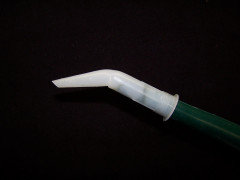
My little 2L watering cans are more than 30 years old and still going strong. Should I be watering the leaves as well as the roots? No. Try to avoid wetting foliage, unless it's a REALLY hot day, especially when/if you water in the evening. One part of the disease quadrangle is time. Fungal spores need a long enough incubation period, during which they are continually moist, in order to vex us. To deny the incubation period is one way to deny the disease.
Some people are saying to water daily and some weekly but I can't understand how it could be daily? I do understand finding a pattern that the plant seems to like but daily watering seems like a lot. No one can give you meaningful advice about how often to water unless they are very familiar with the medium you're using, the weather you're experiencing, and in cases other than bonsai, your watering habits (do you water in sips? do you flush the soil when you water, is your medium water-retentive? ...... those kind of questions. Bonsai are more like pets than plants in some ways. They require at least a check on their water status daily, if not watering daily. I don't water every plant every day, but I drag the hose all around the benches and water at least 3/4 of my bonsai plants daily in the summer. In winter I water indoors on a split schedule (the media I use allows watering on a schedule as opposed to on an 'as needed' basis) with plants in the larger pots getting water at 6 day intervals and the tiny pots get water every 3 days. You'll need to find your own rhythm.
We really do have a lot of nice light coming in through our windows year round here and I think bonsai would do well with it. I imagine people outgrow their window space as their hobby expands and move outdoors. Bonsai trees want to be outdoors and will show their appreciation if you afford them that accommodation. Insulated windows omit at least 309% of visible light and walls all of it, so even in FL you'll see a difference between indoors and outdoors. As for the potting soil from Peter Tea, do I use only that and no added dirt? I use 2 basic media. This one for misc stuff other than woody plants and succulents:
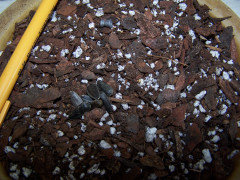
The one below is what I use for woody plants which includes bonsai in bonsai pots and potential bonsai growing on in nursery cans or larger bonsai training pots:
I make both of these media myself and amend them if required with other ingredients I keep on hand. Am glad you saw the video and enjoyed it enough to watch. I just assumed people bought their bonsais or traded with friends or fellow club members. I purchased a lot of woody material in the first 10 years of my practicing bonsai, some of it was rough=shaped to at least the degree a trunkline was discernible, the tree within the tree, so to say. After that period, I started almost all trees from cuttings and grew them out in raised beds.

The tree in the middle had just been chopped back (spring) and lifted from a raised bed. It was 5 years old and roughly 8 feet tall. The branch sticking up will be the new leader or the top of the tree. The tree is chopped back so it tapers quickly from a fat trunk to a thin top.
Same tree later that summer.
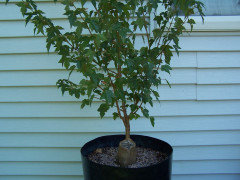

Moss helps the wound where it was chopped to heal. ^^
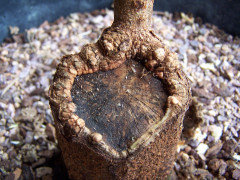

2 years to go. Note how the branch I mentioned is thickening and becoming the new top. The tree will be chopped 2 more times before serious work begins on the branches

See where it was chopped 2 more times? Wound is healed, and the others soon will be.
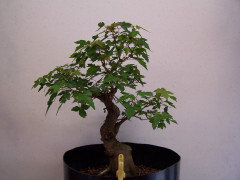
This image was taken summer '19, so the tree has had 2 more years of development. It's much filler and thicker, not much taller, and I've been working on reducing the leaf size so leaves are about 1/3 or 1/4th the size of the leaves above.
Al, I wanted to ask about bonsai pots. Why are some so incredibly expensive? I understand if they're made by hand but does it have anything to do with the growth of the plant or is about beauty or status? (I realize they're all made by hand, but most are done very quickly without high quality control standards.) Do some have more precise drainage that increases their price and value? The high quality, hand-made pots will all have excellent drainage. Some of the stamped and molded pots will have areas in the pot lower than the drain hole, so water pools there - not a good thing even if it's only 1/8" deep. High quality pots will hold no water in the pot material, making them impervious to frost. Hand made pots are glazed and toned by hand and often fired in wood-burning kiln which imparts a somewhat unpredictable but unique appearance. A good trees deserve good pots that compliment the tree but never serve as the focal point of the composition unless the pot is purposely being scrutinized. Here's the commentary and discussion I found on perched water. https://www.bonsainut.com/threads/perched-water-tables-myth.1588/page-3 Reading it got me thinking! For instance, on the Fukien Tea bonsai I bought, the soil appears to be all small rock and on top of it the tree roots appear to be in a ball of soil. I couldn't understand this. Now I'm wondering if it's about drainage. The folks taking part in that discussion were drawing no distinction between ballast and a drainage layer. Ballast reduces the volume of excess water a medium can hold by displacing media that holds water. The image on the right shows how a brick, serving as ballast, reduces the amount of excess water a planting can hold. The image in the middle shows how water perches above the drainage layer.

They were describing a thin layer of coarse material at the pot bottom when it was actually ballast. In order for it to be a drainage layer, there must be clear delineation between the 2 substrates comprised of different size material, and, the size of the particles in the lower layer must be at least 2.1X >the size of the particles in the upper layer, and, the size of the particles in the upper layer must be smaller than approx .100" or water will not perch in the medium. You can't toss a couple of handfuls of coarse pebbles in the pot so the layer is only 1-2 pebbles deep, then mix in the substrate and rightly call that a drainage layer when it's ballast.
After reading all four pages of the above 'discussion' (mostly childish bickering) I found what may be a comment that's correct but I wanted to ask you. Are some growing their trees using rock only to prevent perched soil and nutrients added by fertilizer to give the tree it's food? Sort of. Conventional container gardening is much closer to hydroponics than growing in the earth. We wet the medium, the water should quickly flow out of the pot, leaving fertilizer and moisture inside of soil particles which are porous, on the surface of all soil particles, and at the interface where particles contact each other. The spaces between soil particles should be free of water (except vapor) and full of air. You can only accomplish that with a soil made of particles larger than .100" and at least fairly uniform in size. I can't understand why the two stores in Orlando sold bags of almost pure dirt? The same reason they make a fertilizer for nearly every type of plant under the sun - peoplewill buy it. If adding dirt to real bonsai soil do I just put it on top. I know that can't be right either. I'm missing something and that 4 page conversation confused me more. I do understand that the smaller the pot the greater the chance of perched water. Not quite. IF you are using a medium that supports perched water, the SHALLOWER the pot is, the more serious the effects of a PWT will be (because a larger fraction of the medium is saturated in shallow vs deeper pots) and the more difficulty you would have dealing with it if you don't know how to trick water into exiting the pot. Thank you for showing the diagram. I want to make sure i get that right before I do anything further. Most welcome.
Al
jackpug
Original Author2 years agoAl, I'm still reading and stayed up too late last night doing so.
I now truly understand that growing bonsai outdoors is the most natural place to grow bonsai. If someone were to tell me they were going to grow orchids inside their house I'd cock my head like a dog and think, "What?" It would make no sense. I'll sometimes buy a beautiful orchid and keep it indoors to enjoy for many months until the blooms dies, then take it outdoors with the others. Once we put an orchid outdoors it never comes in again. But actually growing an orchid indoors makes no sense for too many reasons to list.
So the fukien tea will probably go outdoors when I see it start to recover. I think it's potted correctly. The gentleman at the nursery who sold it to me talked a lot about he likes to use 'gravel' to grow his bonsai but I'll wait a good while before repotting it to see what's in there. Right now I just want to ensure that it lives.
I was reading about planting bonsai trees in organic and inorganic medium. I could see that organic medium could rot adding another layer of problem for the roots if they're prone to rotting? Also, I was a bit confused about people using coconut coir as a substrate? And people who are not using a soft rock like akadama. It made sense to me that as it softens and starts to weaken it would allow room for root growth. Is this the primary reason it's used? I read the contents of the Aoki blend of bonsia potting 'soil' and it's 80% akadama, 18% pumice, and 2% lava.
I'm going to buy that when i find it (small or medium mix?) and should I add some of the dirt to it or just add a fairly thin layer of dirt on top or no dirt at all when I repot my jade plants?
Is this the fertilizer you use on your bonsai? https://www.amazon.com/Dyna-Gro-DYFOL008-Foliage-Pro-White/dp/B003SUT6VS/ref=sr_1_5?dchild=1&keywords=pro+fertilizer+9-3-6&qid=1628380287&sr=8-5
Al, Thank you for showing me where you cut your tree. That's brilliant how you create the trunk and branches years in advance! It very clearly and precisely shows the amount of effort and foresight that goes into creating a tree. It's wonderful.
I'd noticed a jade branch that had fallen off my jade bonsai some time ago that I stuck in our succulent garden and the trunk is so fat! I thought 'I wonder if I could turn that back into a bonsai?' I'd thought about cutting it but I wasn't sure what would happen after I'd cut the fat branch growing. I'll take a picture to show you. I'm not crazy about jade bonsai but it would be a long term project and kind of fun to watch happen. How will you go about making the leaves smaller now to match the size of the tree trunk?
Thank you for your input on the watering can. I saw that Haws watering cans were popular with bonsai growers so I'll compare the two carefully.
I found a bonsai nursery nearby that offers day long classes that include a plant and supplies. He shows a quick video that shows him choosing a fukien tea plant in a pot and he wires the plant while it's still in the pot and ends with putting it into the pot. It's reasonable...Something like 125.00 for the afternoon and I think I could learn a lot. He's well known and liked by Florida bonsai enthusiasts so that's a good thing. He's probably 25 minutes away.
I understand why you mean about watering bonsai. I really do. When I joined a group of rosarians I learned how many different ways there were to do the same thing with roughly the same results. I'd taken what I'd learned about roses from our first neighbor as gospel but I've since learned I can push my plants with various fertilizers for growth and blooms and just how hard I can push each one. Like you say, some are beloved like pets and others who don't perform as well are merely tolerated. I know many rose people who rip out expensive plants because 'they're not doing anything'. They all use those words. I've yet to give up on a rose but I'm beginning to understand the desire to.
Al, thank you for explaining what that conversation was actually about. It helps. When I get the Aoki blend of potting soild should I get the small or medium particles? Thank yo!
We're working with a good friend on re-landscaping our home right now and I'm learning a lot about different varieties of palm trees! We lot a lot of big trees in past hurricanes. Reading about bonsai is a welcome diversion and I know how much I have to learn which only makes it more interesting.
Thank you very much for your help Al!. I wouldn't have given up without it but I may not be devoted as much time to reading and looking at beautiful trees if it weren't for your help. Thank you again.
Katiejackpug
Original Author2 years agoAl, I finally 'got it' after watching some videos on the perched water table in soil. Finally. In this case I needed to see it and not just read it. Thank you for your help with that.
I need to order something. Is 'Bonsai Outlet' a place that you've ever ordered from?
Thank you,Katie
tapla (mid-Michigan, USDA z5b-6a)
2 years ago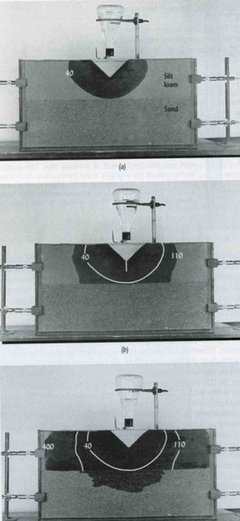
I haven't ordered from BO. What are you in the market for?
Al
jackpug
Original Author2 years agoI wanted to get the Aoki blend of potting mix you suggested. Everybody, and I mean everybody including BO are out of stock. It's not surprising given that it comes from Japan. I finally went with an akadama, pumice and lava miix from Eastern Leaf. They didn't give the % of each ingredient online so I called the 800 number and the girl who answered tried to find out but couldn't. I went ahead and ordered it. https://www.easternleaf.com/Akadama-Lava-Pumice-Soil-Mix-p/124930-01.htm
My jade plant is doing fine but the 'jade forest' I planted isn't. I remembered putting a handful of small granite rocks that we have in a garden bed here at home on the bottom of the pot and I don't think that's the problem but I want to replant it properly.
I also ordered a sheet of plastic screen for a few dollars since I had to scramble to find something at home when I repotted last time. Is plastic a problem? It was only a few dollars if it is.
I'm going to move the scorched fukien tea outdoors permanently. It's not looking good. I'm currently using my felco pruners on it and eventually will invest in a pair of scissors. I don't feel I deserve them yet.
I've been looking at plants from nursery's all over the country and have seen some beautiful trees under 100.00. I want to go to the nursery in Tampa (Artisan Bonsai) first....The nursery that I posted the video from.
I'm drawn to Chinese Elms for whatever reason. Most of the trunks have the S shape that I like and I'd have the opportunity to learn to wire with it...but I'm drawn to it. I also like the fukien tea and if this one turns the corner I may get another with a trunk I like. If it dies I probably won't even though I had nothing to do with its current state. Everybody makes mistakes but it might feel like a failure if I can't bring it back.
I sent you a link to a fertilizer. Was that the correct one you suggested? Thank you for looking Al? How are things going with you and your trees? Do you have many to look after? Do you feel compelled to buy new ones when you go to shows and see ones you like or do you get over wanting another one?
I'm going to send you a photo of the jade trunk that I'd put in the succulent garden from this jade bonsai and I think it would be beautiful to experiment with. I know I can't wire jade or so I've read but the trunk is so fat I could work with that and continue chopping it and watch it's progress.
Where do you buy your pots and humidity trays. Do you use the cheap Chinese pots or not? What is the difference between using glazed and unglazed?
Thanks so much Al. Have you considered teaching? You'd be very good at it.
Be well, Katietapla (mid-Michigan, USDA z5b-6a)
2 years agoI'll sometimes buy a beautiful orchid and keep it indoors to enjoy for many months until the blooms dies, then take it outdoors with the others. Once we put an orchid outdoors it never comes It's possible to start with bark of appropriate size, and it might serve well as a grow medium for a while, but it would eventually break down into increasingly smaller particles that invite excessive water retention and the hypoxic conditions that support fungal infections of the dangerous kind.
I was reading about planting bonsai trees in organic and inorganic medium. I could see that organic medium could rot adding another layer of problem for the roots if they're prone to rotting? It's possible to start with bark of appropriate size, and it might serve well as a grow medium for a while, but it would eventually break down into increasingly smaller particles that invite excessive water retention and the hypoxic conditions that support fungal infections of the dangerous kind. Also, I was a bit confused about people using coconut coir as a substrate? Try to avoid using coir in your media, especially media intended for use with bonsai. It has issues that require work-arounds. There should be no reason to use peat or coir in bonsai media. As far as using coir at more than 10% of any container medium, it's just not a good idea. If you want more info re the why/wherefores, let me know.
I'm going to buy that when i find it (small or medium mix?) and should I add some of the dirt to it or just add a fairly thin layer of dirt on top or no dirt at all when I repot my jade plants? Use nothing with particles smaller than .100". There is no sense in buying a screened mix to avoid excess water in the pot, then add ingredients that ensures excess water will hang around to interfere with root function/ health.
Is this the fertilizer you use on your bonsai? https://www.amazon.com/Dyna-Gro-DYFOL008-Foliage-Pro-White/dp/B003SUT6VS/ref=sr_1_5?dchild=1&keywords=pro+fertilizer+9-3-6&qid=1628380287&sr=8-5Yes, and the quart size is the better value.
I'd noticed a jade branch that had fallen off my jade bonsai some time ago that I stuck in our succulent garden and the trunk is so fat! I thought 'I wonder if I could turn that back into a bonsai?' I'd thought about cutting it but I wasn't sure what would happen after I'd cut the fat branch growing. I'll take a picture to show you. I'm not crazy about jade bonsai but it would be a long term project and kind of fun to watch happen. I would encourage you to look to genera other than Crassula for bonsai potential. If you like the succulents, Portulacaria (aka mini-jade/ elephant bush/ spekboom) would be a much better choice.

In the process of growing a trunk with taper ^^^

Same tree ^^^

Same tree ^^^
Same tree, getting some taper in the trunk ^^^
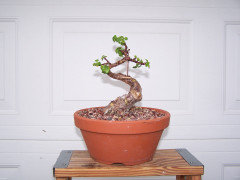
Trunkline established, branches growing where I want them. ^^^ Time to start building the tree.
How will you go about making the leaves smaller now to match the size of the tree trunk? Increasing the number of branches and leaves tends to make leaves smaller because the amount of food/ energy produced is divided between a larger number of growing points. Also, selective defoliation forces the tree to pay first for the leaves which are selectively removed, then pay again for the new leaves that put on after the defoliation. The second flush of leaves comes in smaller. Also, sacrifice branches can take a major share of food/ energy away from the main form of the tree.

This tree (hackberry) has 7 sacrifice branches that will never be a part of the composition. They are wired away from the tree then upward, 'away' so they don't block light from the future tree and upward because branches on a vertical plane are allotted more food/ energy than those which grow more horizontally.
I found a bonsai nursery nearby that offers day long classes that include a plant and supplies. He shows a quick video that shows him choosing a fukien tea plant in a pot and he wires the plant while it's still in the pot and ends with putting it into the pot. It's reasonable...Something like 125.00 for the afternoon and I think I could learn a lot. He's well known and liked by Florida bonsai enthusiasts so that's a good thing. He's probably 25 minutes away. By all means, join a club, find a willing mentor who knows what (s)he's doing, go to shows, join workshops, watch demos, at shows, pay to hear headliner's critique the trees in the show.
Al, thank you for explaining what that conversation was actually about. It helps. When I get the Aoki blend of potting soil should I get the small or medium particles? If you trust the seller, ask him/her. I'd be leaning toward the finer medium because of the heat, but that might not be best when it rains every day, though there are some easy tricks you can use to keep the pots from staying too wet too long.
I also ordered a sheet of plastic screen for a few dollars since I had to scramble to find something at home when I repotted last time. Is plastic a problem? Not at all. I use it for almost all drain holes. Occasionally I use a piece of insect screen.
I'm drawn to Chinese Elms for whatever reason. Most of the trunks have the S shape that I like and I'd have the opportunity to learn to wire with it...but I'm drawn to it. I also like the fukien tea and if this one turns the corner I may get another with a trunk I like. If it dies I probably won't even though I had nothing to do with its current state. Everybody makes mistakes but it might feel like a failure if I can't bring it back. In your defense, you really didn't find out much about care until the damage was done, so don't be too hard on yourself.
You might want to look at THIS THREAD. There is a ficus with plenty of trunk movement that Andrew just acquired.
I sent you a link to a fertilizer. Was that the correct one you suggested? Yes. Foliage-Pro 9-3-6 is a very good product. How are things going with you and your trees? Very well. I retired 2 years ago and have almost all the time I need to work on trees. Do you have many to look after? About 200. Do you feel compelled to buy new ones when you go to shows and see ones you like or do you get over wanting another one? I rarely buy trees any more. The main reason is, I can grow them out myself and devote the time it takes to ensure the trees don't have serious flaws. I enjoy the 'building' process of chopping, planning, pruning, but I hate repotting.
I'm going to send you a photo of the jade trunk that I'd put in the succulent garden from this jade bonsai and I think it would be beautiful to experiment with. I know I can't wire jade or so I've read but the trunk is so fat I could work with that and continue chopping it and watch it's progress. I'll watch for the image(s).
Where do you buy your pots and humidity trays. Wherever I find them. Quality trees get quality pots, and I usually buy those at shows. I'm partial to Sara Rayner's pots, and must have more than 100 that haven't yet been used. Do you use the cheap Chinese pots or not? Yes, I use them. I have a couple hundred of the cheap pots around and a ton of plastic training and mica pots of all sizes. What is the difference between using glazed and unglazed? Pot primer.
Thanks so much Al. Have you considered teaching? You'd be very good at it. Thanks - I appreciate that.I have 3 people that usually visit 1 day per week for bonsai guidance, plus 3 other more advanced practitioners who often bring trees over to work on or have them critiqued from a different perspective. It's a thoroughly enjoyable way to spend an afternoon.
Al



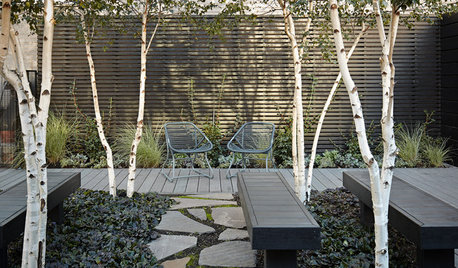

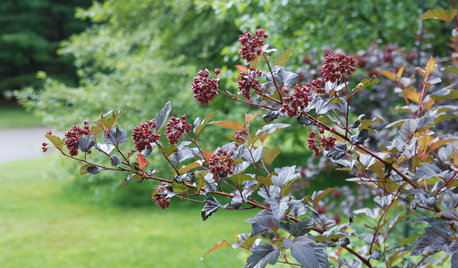

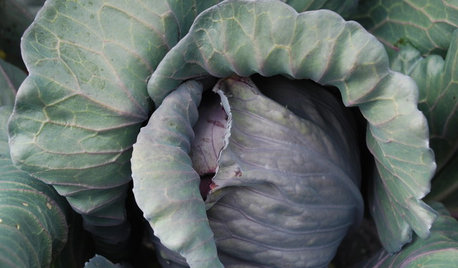

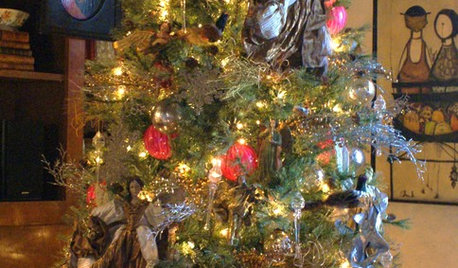





tapla (mid-Michigan, USDA z5b-6a)